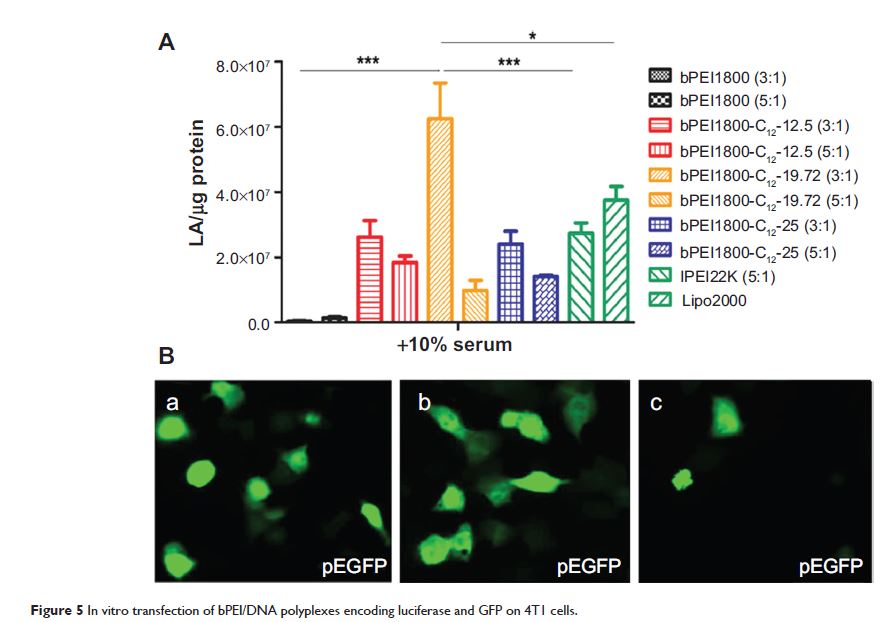9 0 6 7 6
论文已发表
注册即可获取德孚的最新动态
IF 收录期刊
- 2.6 Breast Cancer (Dove Med Press)
- 3.9 Clin Epidemiol
- 3.3 Cancer Manag Res
- 3.9 Infect Drug Resist
- 3.6 Clin Interv Aging
- 4.8 Drug Des Dev Ther
- 2.8 Int J Chronic Obstr
- 8.0 Int J Nanomed
- 2.3 Int J Women's Health
- 3.2 Neuropsych Dis Treat
- 4.0 OncoTargets Ther
- 2.2 Patient Prefer Adher
- 2.8 Ther Clin Risk Manag
- 2.7 J Pain Res
- 3.3 Diabet Metab Synd Ob
- 4.3 Psychol Res Behav Ma
- 3.4 Nat Sci Sleep
- 1.9 Pharmgenomics Pers Med
- 3.5 Risk Manag Healthc Policy
- 4.5 J Inflamm Res
- 2.3 Int J Gen Med
- 4.1 J Hepatocell Carcinoma
- 3.2 J Asthma Allergy
- 2.3 Clin Cosmet Investig Dermatol
- 3.3 J Multidiscip Healthc

已发表论文
烷基化低分子量的聚乙烯亚胺通过双子表面活性剂样作用的高基因递送效率
Authors Liu S, Huang W, Jin MJ, Wang QM, Zhang GL, Wang XM, Shao S, Gao ZG
Published Date July 2014 Volume 2014:9(1) Pages 3567—3581
DOI http://dx.doi.org/10.2147/IJN.S64554
Received 21 March 2014, Accepted 27 April 2014, Published 28 July 2014
Abstract: To our knowledge, the mechanism underlying the high transfection efficiency of alkylated low-molecular-weight polyethylenimine (PEI) is not yet well understood. In this work, we grafted branched PEI (molecular weight of 1,800 Da; bPEI1800) with lauryl chains (C12), and found that bPEI1800-C12 was structurally similar to gemini surfactant and could similarly assemble into micelle-like particles. Stability, cellular uptake, and lysosome escape ability of bPEI1800-C12/DNA polyplexes were all greatly enhanced after C12 grafting. bPEI1800-C12/DNA polyplexes exhibited significantly higher transfection efficiency than Lipofectamine™ 2000 in the presence of serum. Bioluminescence imaging showed that systemic injection of bPEI1800-C12/DNA polyplexes resulted in intensive luciferase expression in vivo and bioluminescence signals that could be detected even in the head. Altogether, the high transfection efficacy of bPEI1800-C12 was because bPEI1800-C12, being an analog of gemini surfactant, facilitated lysosome escape and induced the coil–globule transition of DNA to assemble into a highly organized micelle-like structure that showed high stability.
Keywords: self-organization, alkylation, luciferase, bioluminescence imaging
Keywords: self-organization, alkylation, luciferase, bioluminescence imaging
